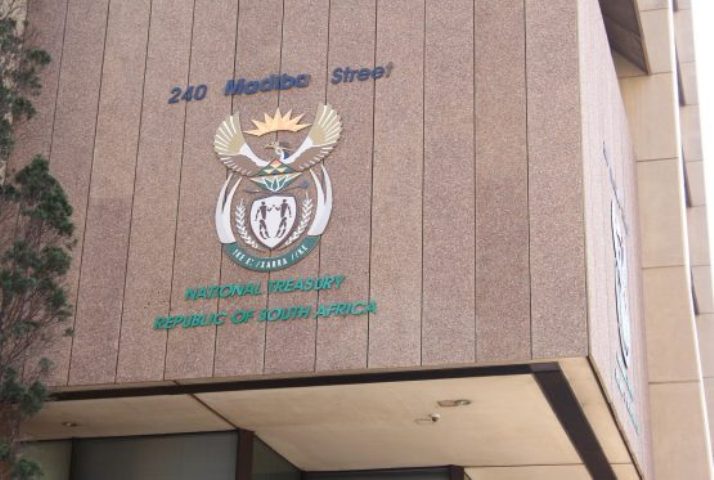SA Secures $1.5 Billion World Bank Loan to Address Energy and Economic Reform
“These structural reforms are essential enablers of inclusive growth, improved service delivery, and job creation,” the Treasury said in its official statement.

- Country:
- South Africa
In a landmark step towards revitalizing its economy and overcoming deep-rooted infrastructure challenges, the Government of South Africa and the World Bank have signed a US$1.5 billion Development Policy Loan (DPL) Agreement. The funding is set to drive transformative structural reforms in the country's energy and freight transport sectors, while also reinforcing South Africa’s transition to a low-carbon economy.
The loan agreement was announced by the National Treasury on Monday and marks a significant milestone in South Africa’s ongoing efforts to implement broad-based economic reforms aimed at enhancing public service delivery, attracting private investment, and fostering sustainable growth.
A Three-Pillar Reform Strategy
The Development Policy Loan will support critical structural reforms, built on three strategic pillars:
-
Improving Energy Security: This comes amid ongoing load shedding and infrastructure deficits plaguing the national power utility, Eskom. The loan is expected to support reforms aimed at diversifying energy sources, facilitating private sector participation in generation, and modernizing the regulatory framework.
-
Enhancing Freight Transport Efficiency: Chronic inefficiencies in rail and port logistics—managed primarily by Transnet—have long been identified as barriers to economic competitiveness. The loan will support initiatives that improve freight mobility, reduce backlogs, and enhance the operational efficiency of freight corridors.
-
Accelerating a Low-Carbon Transition: As part of South Africa’s climate commitments under the Paris Agreement and its Just Energy Transition Strategy, the funding will facilitate the expansion of renewable energy, improve emissions reporting frameworks, and support green public procurement.
“These structural reforms are essential enablers of inclusive growth, improved service delivery, and job creation,” the Treasury said in its official statement.
Favourable Financial Terms to Safeguard Fiscal Stability
The National Treasury emphasized that the financing aligns with South Africa’s broader debt and financing strategy. The terms offer attractive lending conditions to ensure the country does not incur unsustainable debt obligations. Specific loan terms include:
-
Loan Amount: US$1.5 billion
-
Maturity: 16 years
-
Grace Period: 3 years
-
Interest Rate: 6-month Secured Overnight Financing Rate (SOFR) plus 1.49%
The favorable terms aim to keep debt service costs manageable and help protect critical social spending from being crowded out by rising fiscal obligations.
Catalyzing Private Sector Investment and Institutional Reform
The Treasury noted that this DPL is not just about funding—it is a strategic instrument for crowding in private capital and advancing institutional reform. Through this initiative, the government seeks to create a more predictable regulatory environment, strengthen public entities, and foster greater public-private collaboration, particularly in infrastructure.
“This partnership marks a significant step toward addressing South Africa’s pressing economic challenges of low growth and high unemployment,” the Treasury emphasized. “It is an important part of government’s reform agenda to rebuild the economy, reduce inequality, and boost investor confidence.”
Strengthening International Development Cooperation
The National Treasury expressed deep appreciation for the World Bank’s continued commitment to South Africa’s development goals. “This agreement is a testament to the strong and constructive relationship between South Africa and the World Bank,” the statement read.
The loan comes at a time when South Africa is navigating persistent structural economic headwinds, including a fragile energy grid, sluggish growth, and high unemployment rates—especially among youth. The injection of development finance combined with technical support from the World Bank is expected to accelerate the pace and depth of reforms needed to unlock long-term prosperity.
A Foundation for Resilient and Inclusive Growth
The World Bank loan is not merely a fiscal instrument—it is a bold step towards reshaping South Africa’s economic landscape. By targeting core infrastructure bottlenecks and prioritizing low-carbon, sustainable growth pathways, the agreement reflects a strategic alignment between national development goals and global sustainability objectives.
As implementation begins, all eyes will be on how effectively the funds are deployed to deliver measurable improvements in power reliability, freight transport performance, and climate resilience—three pillars on which South Africa’s future economic health increasingly depends.
- READ MORE ON:
- June 23
- technologically empowered
- and fiscal discipline should be the guiding principles—or the "mantra"—of all public expenditure.“Governance
- and enhances public service delivery.”He cited landmark contributions of the Committee in areas such as Secretariat reorganization
- including increased public expenditure
- Parliament of IndiaAlso in attendance were **Deputy Chairman Shri Harivansh**
- South Africa
- World Bank
- Development Policy Loan
- energy reforms
- freight transport
- infrastructure investment
- low carbon transition
- National Treasury
- economic reform
- SOFR
- Eskom
- Transnet
- job creation
- structural reform
ALSO READ
Karnataka's Industrial Revolution: A New Era of Investment and Job Creation
IFAD Invests $3.3B in Rural Growth, Climate Resilience, and Job Creation
Chile's Road to Economic Revitalization: Embracing Structural Reforms
IFC Backs Türkiye’s Summa with €50M to Spur Job Creation and Development in Africa









